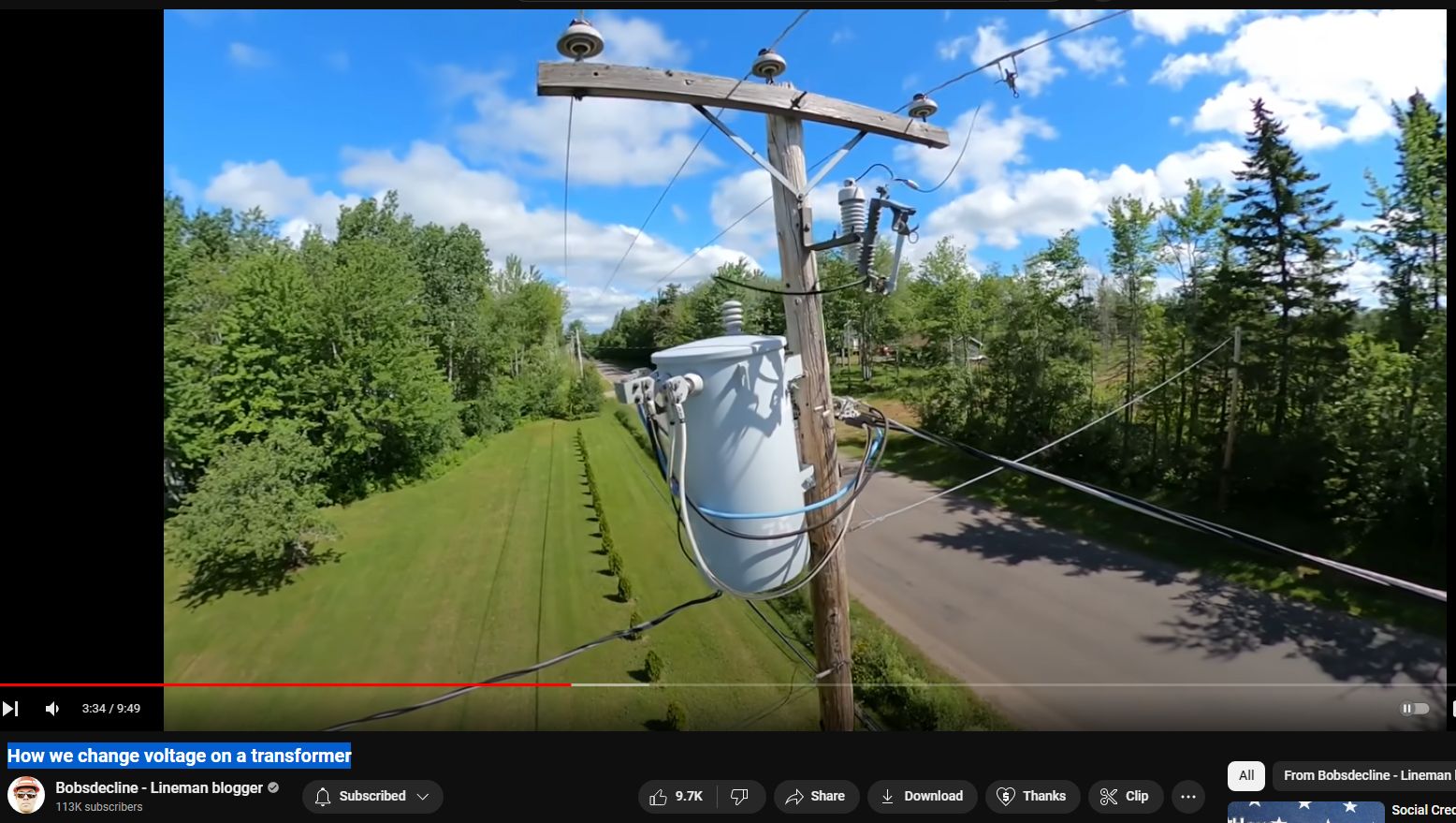
 https://www.youtube.com/watch?v=Zg_EPmtbI58
https://www.youtube.com/watch?v=Zg_EPmtbI58
CGPT
Transformers mounted on telephone poles, commonly known as pole-mounted transformers, play a crucial role in electrical distribution systems. Their primary function is to step down the high voltage from the distribution lines to a lower voltage suitable for residential or commercial use. The standard high voltage in distribution lines can range from 13,200 volts to as high as 25,000 volts or more, which is then typically stepped down to 120/240 volts for residential use in the United States, or to a similar low voltage level suitable for the region where the system is implemented.
### Adjusting Line Voltage
The process of adjusting line voltage through a pole-mounted transformer is not something that is done dynamically in the field; instead, transformers are designed and installed to provide a specific voltage transformation ratio based on the requirements of the electrical distribution network and the needs of the end users. However, there are a few key concepts and components related to how transformers can accommodate or be part of systems that manage or adjust voltages:
1. **Tap Changer**: Some transformers are equipped with a tap changer mechanism that allows utility personnel to adjust the transformer’s voltage ratio. By changing the connection point along the transformer’s coil (tapping), the output voltage can be slightly increased or decreased to accommodate variations in the distribution system’s load or to manage voltage levels within a desired range. Tap changers can be manual, requiring a utility worker to physically make the change, or automatic, responding to system conditions.
2. **Voltage Regulators**: While not part of the transformer itself, voltage regulators are often used in conjunction with transformers in the distribution system to maintain a stable voltage level to the customers, despite fluctuations in load or supply voltage. Voltage regulators can adjust the voltage in more finely tuned increments than is possible with transformer tap changers alone.
3. **Load Balancing and Phase Shifting**: In more complex distribution networks, special transformers, including phase-shifting transformers, can be used to manage power flow and balance loads across different phases of the system. While not directly related to adjusting the voltage for end-user consumption, these transformers help ensure the stability and efficiency of the power distribution system, indirectly affecting the quality of the voltage received by the end users.
### Safety and Professional Handling
It’s important to note that adjusting the voltage output of a transformer or working with any component of the electrical distribution system is highly dangerous and should only be performed by trained utility professionals. Unauthorized individuals should never attempt to access or modify transformers, voltage regulators, or any other part of the electrical distribution infrastructure due to the risk of severe injury or death from electric shock.
### Conclusion
Pole-mounted transformers are set to provide a specific voltage transformation based on predetermined needs, and adjustments to line voltage are generally managed through designed features like tap changers or through additional system components like voltage regulators. These tasks are carefully managed by electrical utilities to ensure safe, reliable power delivery to all users.
